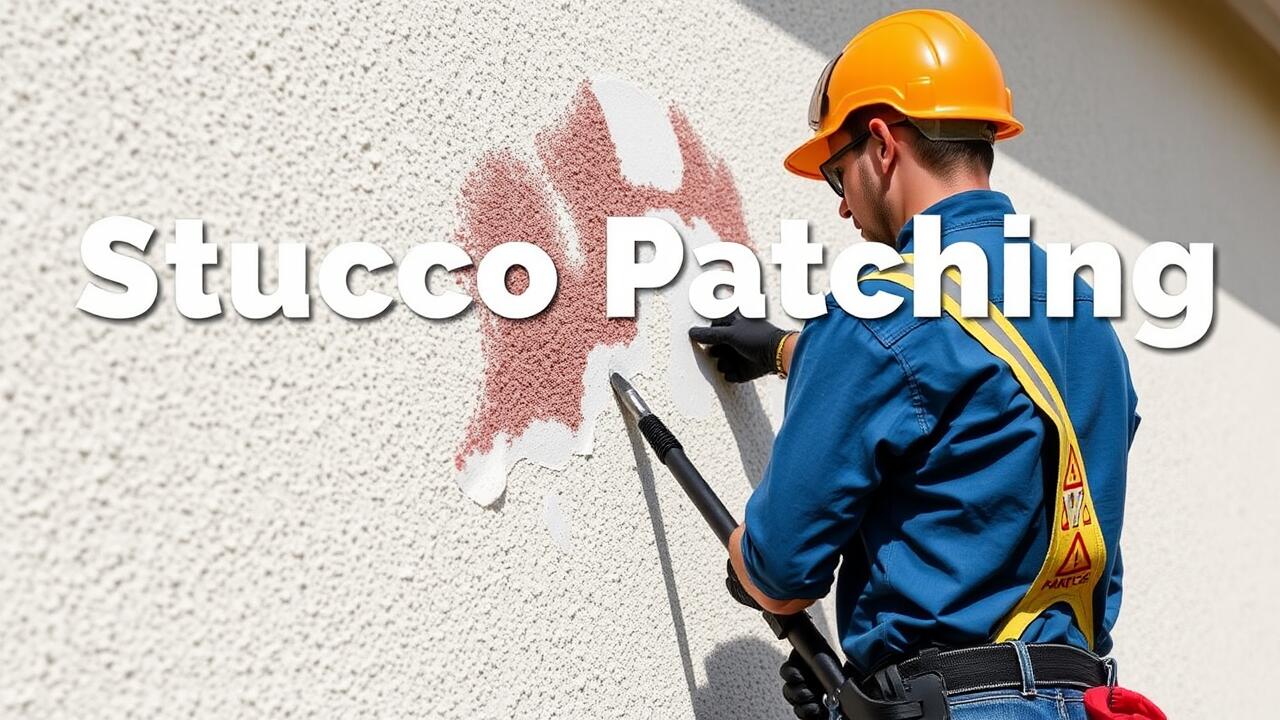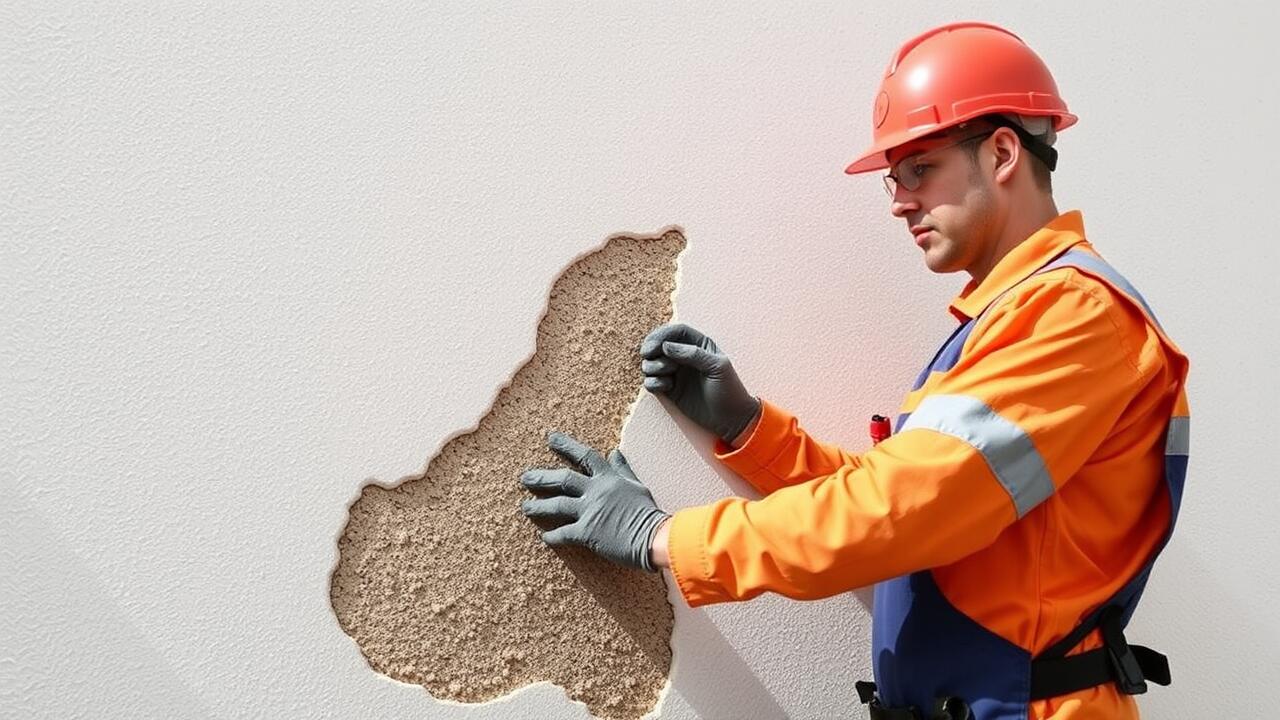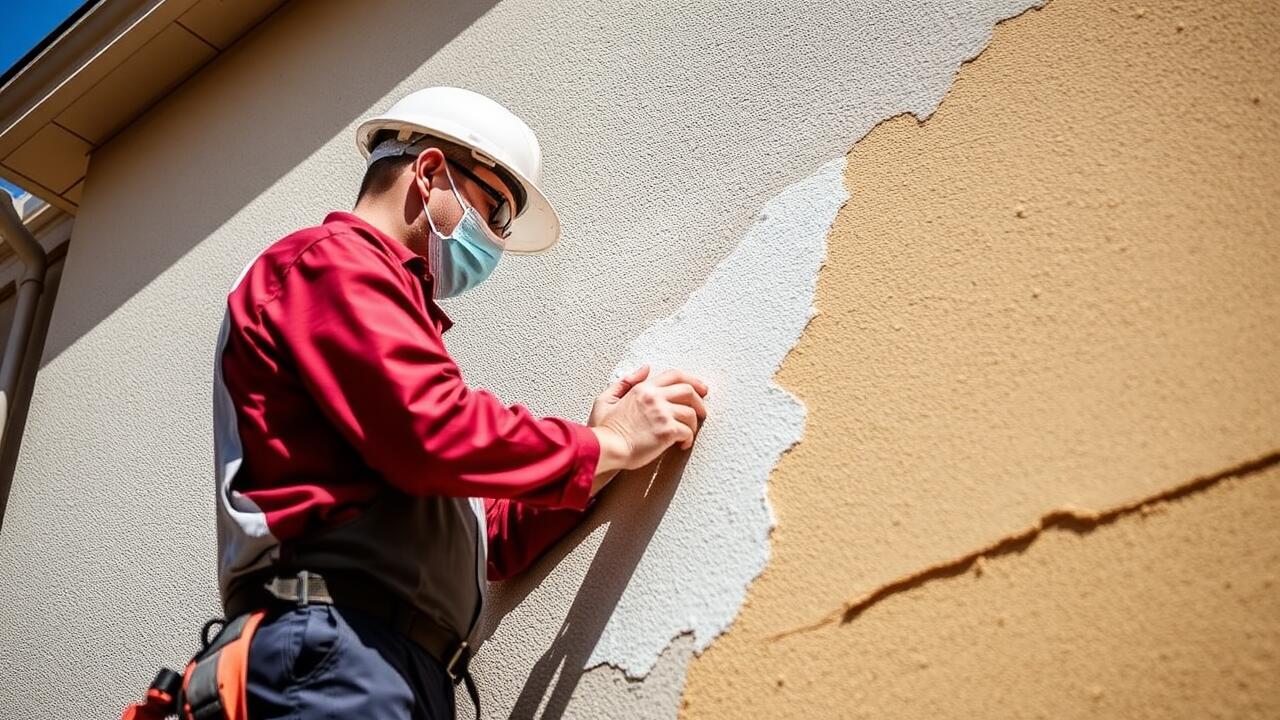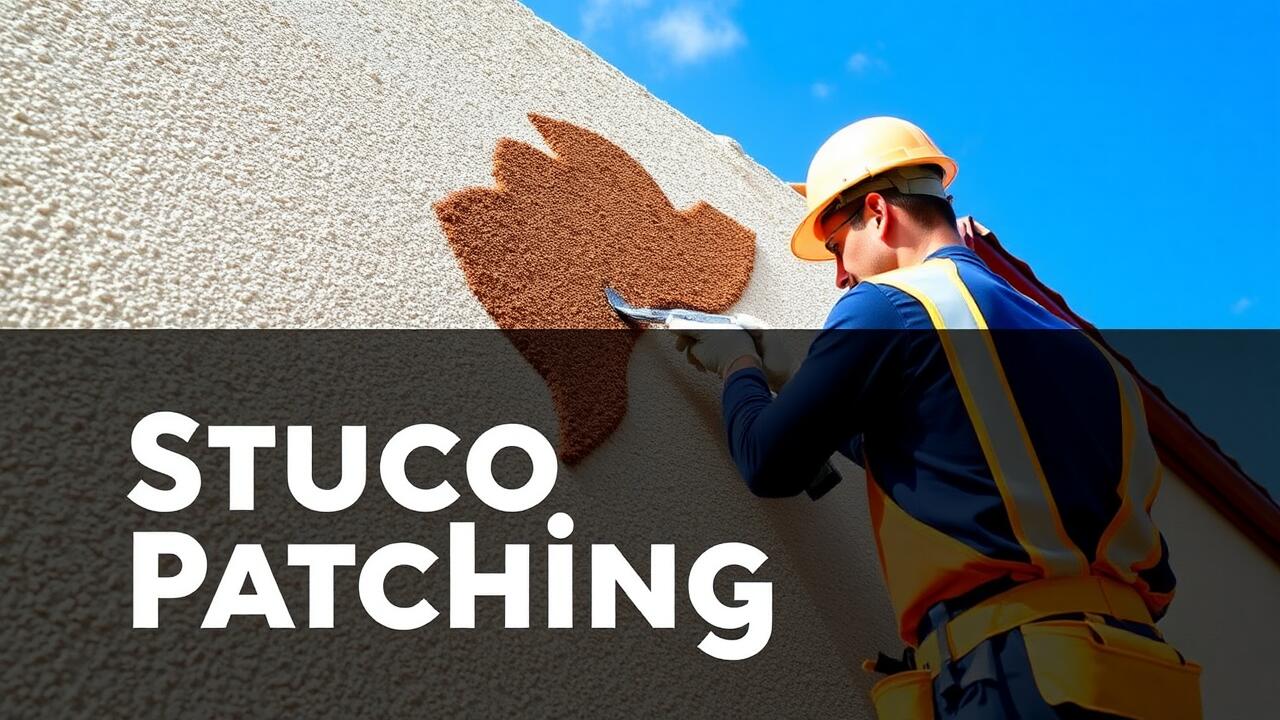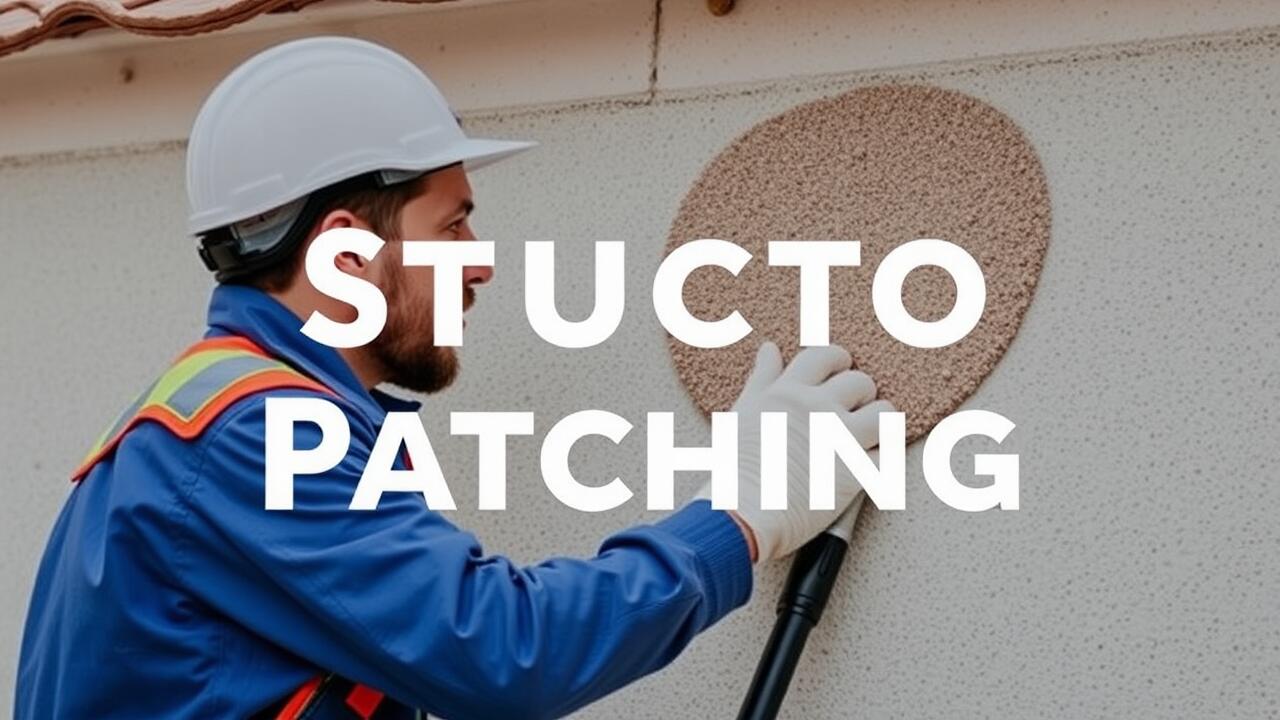
Treating Underlying Issues
Addressing underlying issues is crucial for ensuring the longevity of repair work. Many times, water damage in stucco surfaces stems from leaks or drainage problems. Inspecting the roof, gutters, and downspouts can reveal potential sources of moisture intrusion. In areas like Silver Lake Heights, Los Angeles, homeowners should consider the local climate and soil conditions, which may contribute to these problems. Taking time to resolve these issues prevents further water damage and increases the effectiveness of patching and repairs.
Moisture and mold can quickly escalate if left unattended. A thorough evaluation of the interior and exterior walls will help identify hidden moisture pockets. Using moisture meters and thermal imaging can facilitate the detection of problems that aren't visible to the naked eye. In Silver Lake Heights, Los Angeles stucco patching becomes much more effective when these underlying issues are resolved, allowing for a more stable surface to work on and reducing the risk of recurring moisture-related damage.
Addressing Moisture and Mold Problems
Moisture and mold can wreak havoc on stucco structures, leading to significant damage if not addressed promptly. Identifying sources of moisture is crucial. Leaks from roofs, gutters, or plumbing are common culprits that can seep into the stucco. Homeowners should inspect these areas regularly. If mold is present, proper remediation methods must be used to ensure it is effectively removed and does not return.
In areas like North Hollywood, Los Angeles, stucco patching becomes vital when dealing with mold-damaged structures. Professional services can provide thorough assessments and appropriate treatments. This may involve using anti-fungal solutions and ensuring that the stucco is completely dry before any repairs. Addressing these moisture issues safeguards the integrity of the stucco and prevents further complications down the line.
Repairing the Stucco Surface
Repairing the stucco surface is a crucial step in restoring the integrity and appearance of a home. First, any loose or damaged stucco should be removed to ensure a sound foundation for new material. This may involve chipping away crumbling sections and cleaning the edges to create a smooth transition between the old and new stucco. It is important to assess the extent of the damage before proceeding with repairs to determine whether simple patching is sufficient or if more extensive work is necessary.
Once the damaged areas are adequately prepared, Brentwood, Los Angeles stucco patching techniques come into play. These techniques focus on matching the existing texture and color while ensuring a durable bond. After applying the patching compound, the stucco should be textured to blend seamlessly with the surrounding surface. To achieve the best results, it is essential to follow the manufacturer's instructions and utilize the appropriate tools for the specific texture required. The finished surface should not only restore aesthetics but also provide protection against further moisture infiltration.
Techniques for Effective Patching
Effective patching techniques are essential for restoring damaged stucco surfaces to their original integrity. Start by removing any loose or deteriorated stucco around the damaged area to ensure a clean, stable foundation for the new material. This may require using a chisel or a hammer to create a roughened edge that facilitates better adhesion of the patching compound. Consider using a bonding agent if the area is particularly challenging, as it enhances the bond between the existing stucco and the new application.
When you are ready to apply the patch, it is vital to match the original stucco texture and color. Mixing a stucco patching compound in small batches ensures that it adheres properly and mimics the surrounding surface. For those in need of specialized services, researching local options like Encino, Los Angeles stucco patching can yield professional results. Attention to detail during this process can significantly enhance the overall appearance and durability of the patched area, maintaining the aesthetic of the entire structure.
Applying New Stucco
When applying new stucco, preparation is essential for achieving a seamless finish. Start by cleaning the surface thoroughly to remove any dirt, dust, or loose materials. It is crucial to moisten the area slightly, allowing the new stucco to bond properly with the existing structure. At this stage, it helps to gather all necessary equipment such as trowels, floats, and mixing tools to ensure an efficient process.
Mixing the stucco according to the manufacturer's instructions is vital for a strong application. A consistent texture will facilitate even application across the surface. For those in need of professional assistance, services like Westlake, Los Angeles Stucco Patching are available, providing expertise in mixing and applying stucco. This can ensure a high-quality finish that is both durable and visually appealing, enhancing the overall aesthetic of the building.
Mixing and Applying the Stucco Mix
Proper mixing of stucco is essential for achieving a durable and effective patch. Start by utilizing the right proportions of sand, cement, and water. Typically, a common mix ratio is three parts sand to one part cement. Adjustments can be made based on the specific requirements of your project. It is crucial to thoroughly blend the dry ingredients before gradually adding water to create a workable consistency. The mixture should be moist but not overly wet, ensuring it adheres well to the existing surface.
When applying the stucco mix, begin with preparing the area by dampening the existing stucco to enhance adhesion. Use a trowel to apply the mixture to the damaged area, working in layers. Aim for a uniform thickness that matches the surrounding surface. For projects like Canoga Park, Los Angeles stucco patching, blending the repair smoothly with the original stucco is vital for aesthetic harmony. A finishing trowel can help achieve a smooth surface or textured finish, depending on your preference. Allow adequate drying time before applying any additional layers or paint.
FAQS
What are the common causes of stucco water damage?
Common causes of stucco water damage include improper installation, lack of maintenance, excessive moisture from leaks or weather, and poor drainage systems.
How can I identify moisture and mold problems in stucco?
Look for signs such as discoloration, peeling paint, a musty odor, or crumbling stucco. You may also notice increased humidity levels in areas adjacent to the stucco.
What techniques are effective for patching damaged stucco?
Effective techniques for patching include cleaning the damaged area, using a bonding agent, applying a stucco patch that matches the original texture, and allowing it to cure properly.
Can I apply new stucco over existing damaged stucco?
Yes, you can apply new stucco over existing damaged stucco, but it is crucial to ensure the underlying issues are addressed first, such as moisture problems and structural integrity.
How do I mix and apply a stucco mix correctly?
To mix stucco, combine dry ingredients like sand and cement in the correct proportions, then gradually add water until you achieve a workable consistency. When applying, use a trowel to spread the mix evenly, ensuring it adheres well to the surface.
